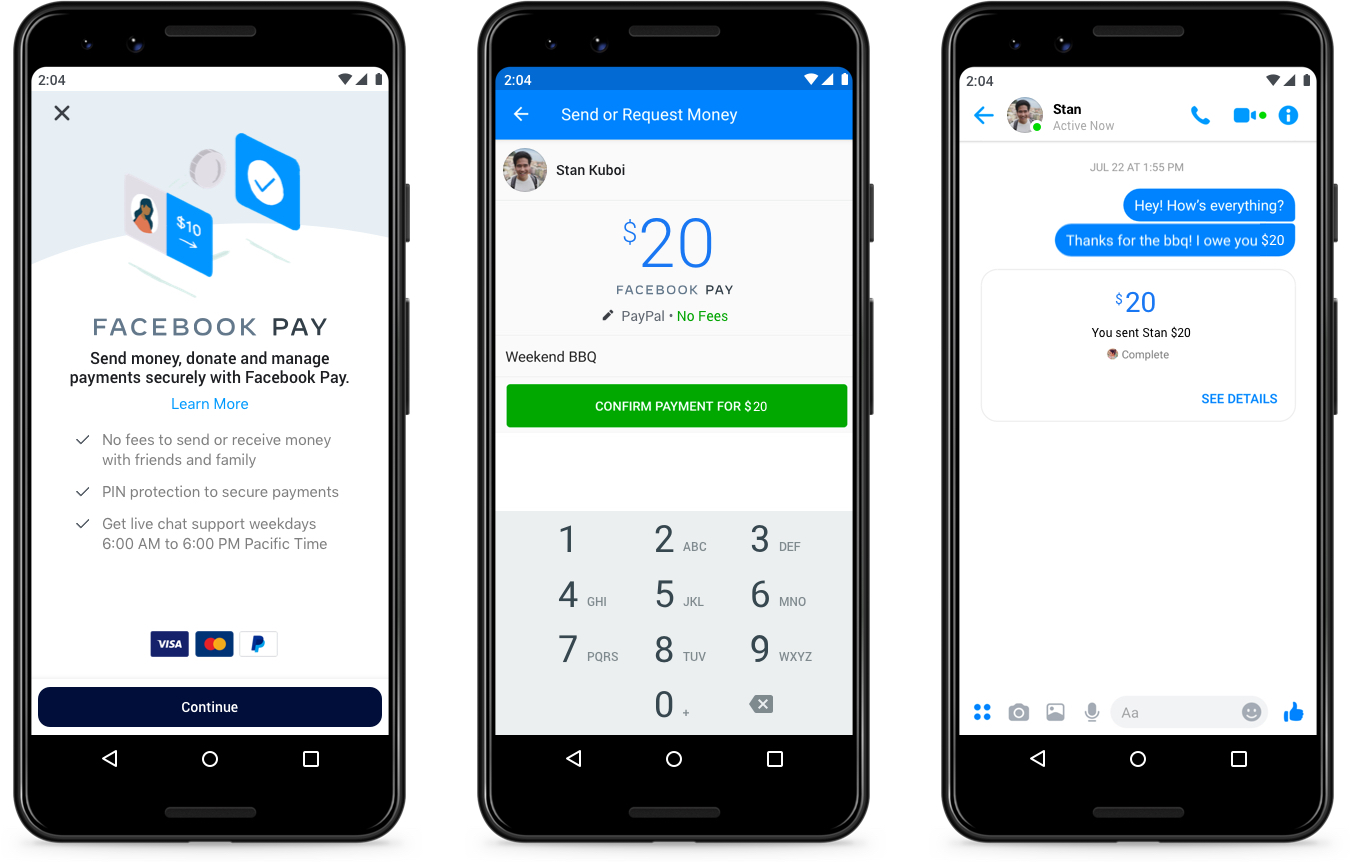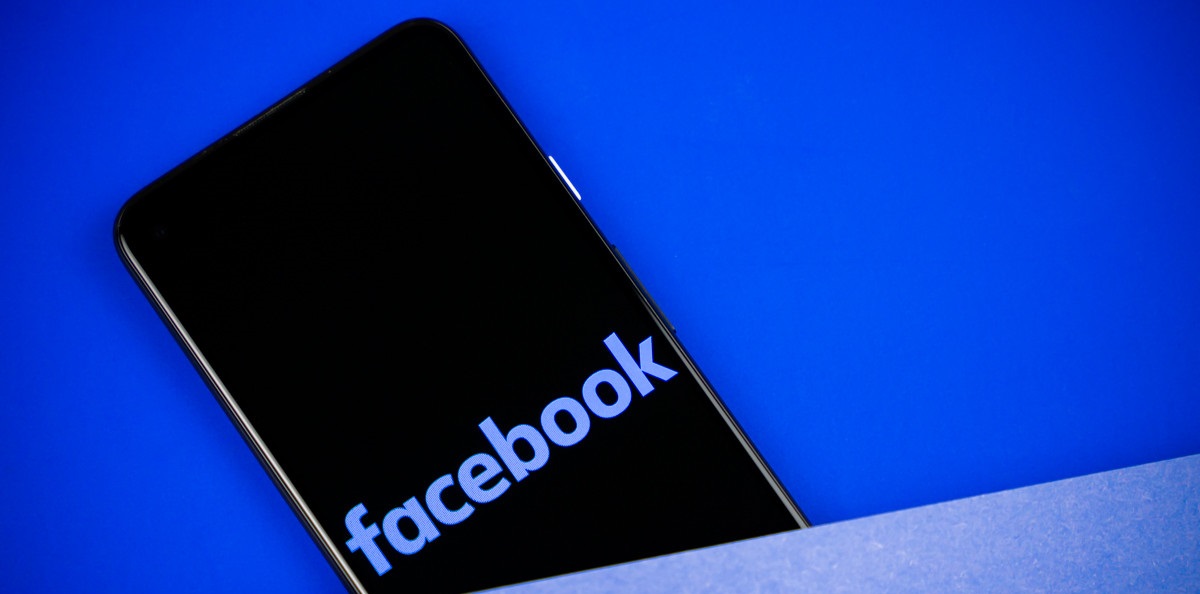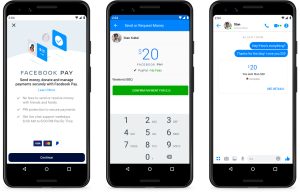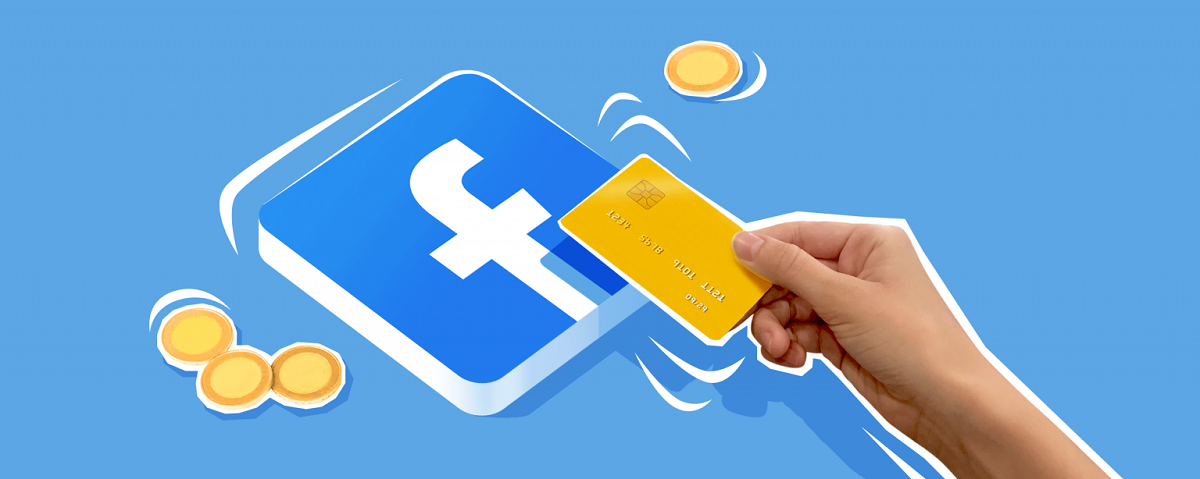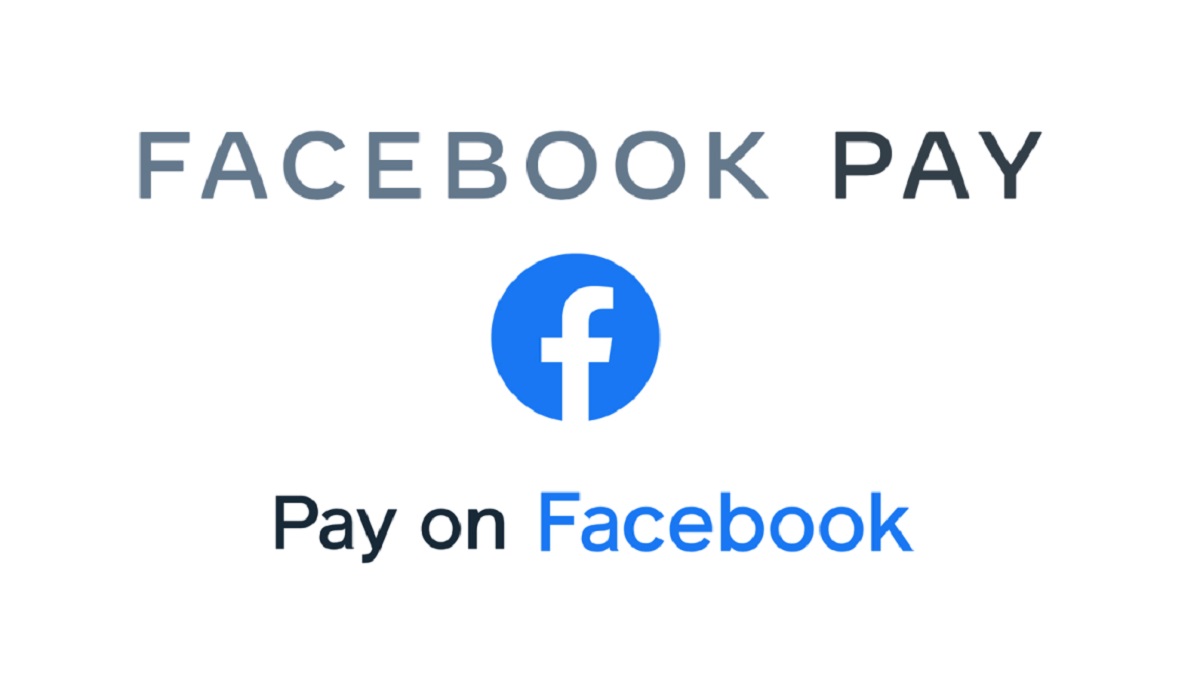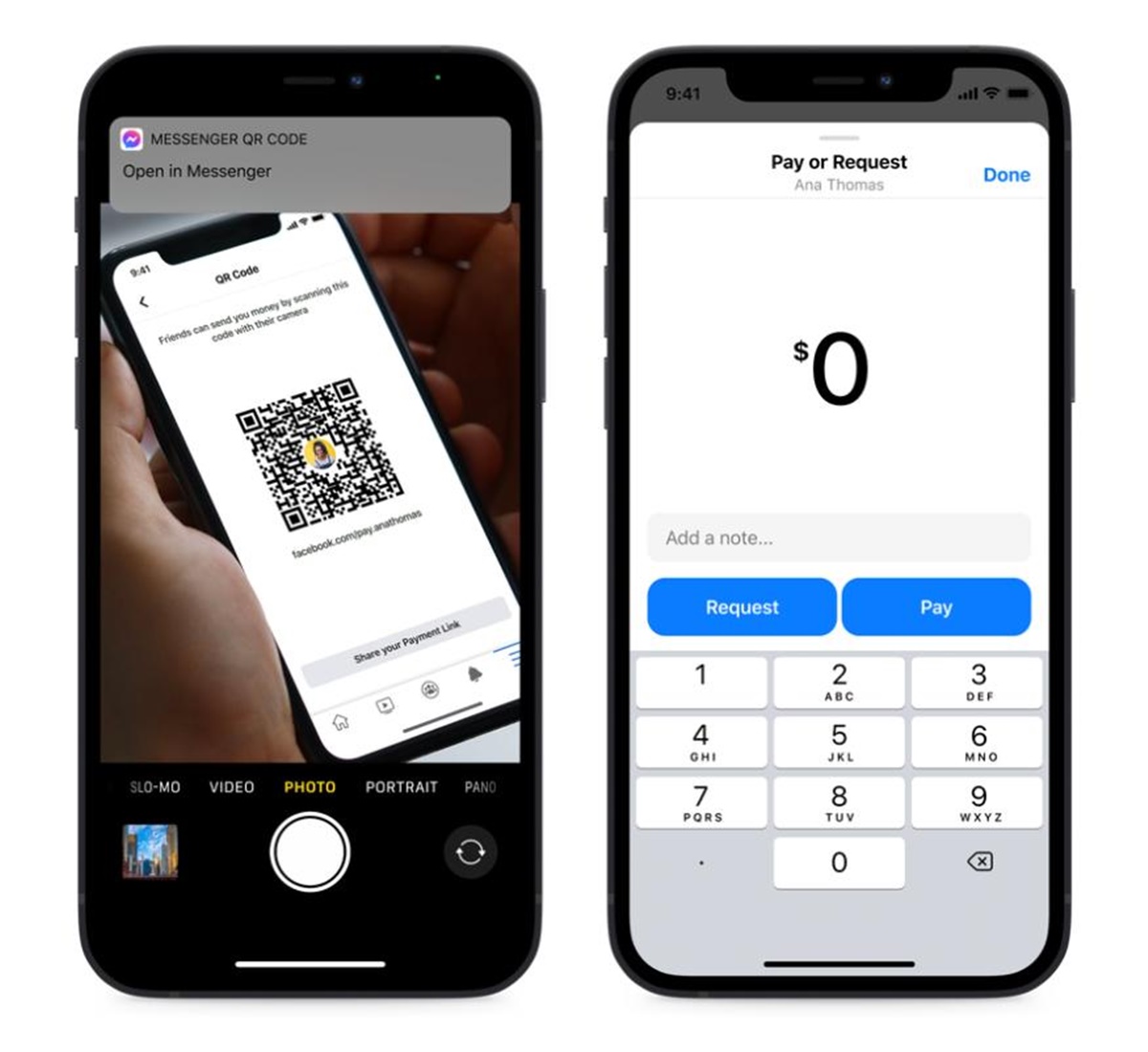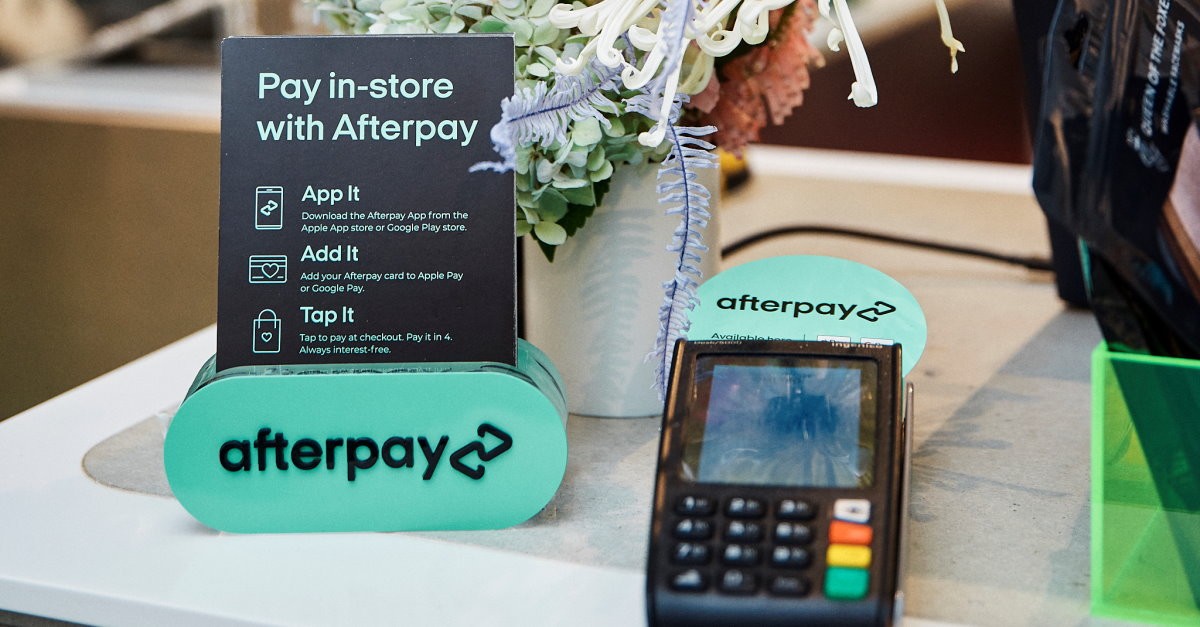What is Facebook Pay?
Facebook Pay is a secure and convenient payment service offered by Facebook that allows users to make transactions and send money to friends, family, and businesses through Facebook, Messenger, Instagram, and WhatsApp. It simplifies the process of sending and receiving money, making it easier than ever to pay for goods and services, split bills, donate to causes, and more.
Facebook Pay is designed to be a seamless, fast, and secure way to make payments online. It is integrated with Facebook’s suite of apps, making it easy to use and accessible to millions of people around the globe. With Facebook Pay, users can link their preferred payment methods, such as credit or debit cards, to their accounts and make payments with just a few clicks.
One of the key benefits of using Facebook Pay is that it provides an extra layer of security for online transactions. When making a payment, users can choose to enable features such as two-factor authentication and biometric authentication to ensure that only authorized individuals can access their accounts. Additionally, Facebook Pay keeps users’ payment information encrypted and protected, reducing the risk of fraud or unauthorized access.
Facebook Pay also offers a range of features to enhance the payment experience. Users can easily keep track of their transaction history, view receipts, and manage their payment methods within the app. Additionally, Facebook Pay allows users to make charitable donations to supported organizations, providing a convenient way to give back to the community.
Overall, Facebook Pay is a versatile and user-friendly payment service that provides a secure and convenient way to make transactions across various Facebook-owned platforms. Whether you need to pay a friend for dinner, purchase products from a business on Instagram, or make a donation to a cause you care about, Facebook Pay makes it easy and efficient.
How Does Facebook Pay Work?
Facebook Pay works by securely linking your preferred payment method to your Facebook account, allowing you to make payments, send money, and make purchases seamlessly across Facebook, Messenger, Instagram, and WhatsApp.
To start using Facebook Pay, you first need to set up the service on your Facebook account. You can do this by going to the settings section of the respective app and following the prompts to add your payment method. Facebook Pay supports major credit and debit cards, as well as some digital wallets.
Once your payment method is set up, you can use Facebook Pay for a variety of transactions. You can send money to friends and family by simply selecting the person you want to send money to and entering the desired amount. You can also make purchases from businesses on Facebook Marketplace, Instagram Shops, and other supported platforms. When making a purchase, you will have the option to choose Facebook Pay as your payment method.
When you initiate a payment or make a purchase using Facebook Pay, the transaction is securely processed through encrypted channels. Your payment information is protected and not shared with the recipient or any other party. Facebook Pay uses industry-standard security measures to ensure the safety of your financial data.
Facebook Pay also offers additional features to enhance the payment experience. For example, you can set up automatic payments for recurring transactions, such as monthly subscription services or utility bills. You can also split bills with friends, making it easy to share expenses for group outings, shared services, or subscription plans.
Furthermore, Facebook Pay allows you to view your transaction history, track your spending, and manage your payment methods within the app. This provides transparency and control over your financial activities.
It is important to note that while Facebook Pay provides a convenient way to make payments, it is not intended for all types of transactions. Some financial services, such as loans or investments, are not supported by Facebook Pay.
In summary, Facebook Pay simplifies the payment process by allowing users to securely link their preferred payment method to their Facebook account. Whether you need to send money to a friend or make a purchase from a business, Facebook Pay offers a seamless and secure way to complete transactions across various Facebook-owned platforms.
How Does Facebook Pay Show Up on Bank Statements?
When you use Facebook Pay to make transactions or send money, you may encounter specific descriptions on your bank statements that indicate the transaction. Understanding how Facebook Pay shows up on bank statements can help you easily identify and track your payments.
On bank statements, Facebook Pay transactions are typically labeled with a description that includes the name “Facebook” or “FB” followed by additional details that provide more information about the transaction. These descriptions can vary depending on the specific type of payment or transaction you made.
For example, if you sent money to a friend through Facebook Pay, the transaction on your bank statement may appear as “Facebook Payment to [Friend’s Name]” or “FB Pay Transfer to [Friend’s Name]”. This description helps you recognize the recipient and the purpose of the payment.
If you made a purchase from a business using Facebook Pay, the transaction on your bank statement might show as “Facebook Order #[Order Number]” or “FB Pay Purchase – [Business Name]”. This description provides information about the purchase and the business you bought from.
In some cases, additional codes or reference numbers may be included in the transaction description, particularly for larger or more complex transactions. These codes help both you and the merchant track and identify the specific transaction within the system.
It’s important to note that the exact way Facebook Pay shows up on your bank statement can vary depending on your bank or financial institution. Therefore, it is recommended to refer to your specific bank statement for the most accurate information about your Facebook Pay transactions.
It’s also worth mentioning that Facebook Pay transactions are typically displayed in your bank statement in chronological order, allowing you to easily track and reconcile your payments. By reviewing your bank statements regularly, you can ensure that all the transactions made through Facebook Pay are accurately reflected and accounted for.
If you have any concerns about a specific Facebook Pay transaction showing up on your bank statement, it is recommended to reach out to your bank or financial institution for further assistance. They can provide additional details and clarification regarding the transaction in question.
In summary, Facebook Pay transactions are identifiable on bank statements through specific descriptions that include the name “Facebook” or “FB”, followed by additional details about the payment or transaction. By reviewing your bank statements, you can easily track and reconcile your Facebook Pay transactions.
Understanding Facebook Pay Transactions on Banking Statements
When you review your banking statements and come across Facebook Pay transactions, it is essential to have a clear understanding of how they are represented. This understanding can help you accurately track and manage your financial activities. Here are some key points to consider when interpreting Facebook Pay transactions on your banking statements.
1. Transaction Descriptions: Facebook Pay transactions on banking statements often include the terms “Facebook” or “FB” in the description. The description typically provides additional details such as the recipient’s name or the purpose of the payment. For example, you may see descriptions like “Facebook Payment to [Friend’s Name]” or “FB Pay Transfer to [Friend’s Name]”. This level of detail helps you identify the specific transaction and who it was sent to.
2. Business Purchases: If you made a purchase from a business using Facebook Pay, the transaction description may include information such as “Facebook Order #[Order Number]” or “FB Pay Purchase – [Business Name]”. This description provides clarity on the purchase you made and the business entity involved, making it easier to track your expenses and reconcile them.
3. Additional Codes: In some cases, banking statements may include additional codes or reference numbers alongside the transaction description. These codes can be helpful for both you and the merchant in identifying and organizing the specific transaction within their systems. They may be especially relevant for more complex transactions or larger purchase amounts.
4. Chronological Order: Facebook Pay transactions are typically displayed on your banking statements in chronological order. This means that they appear in the order in which they were made, making it easier for you to follow the sequence of transactions and verify their accuracy.
5. Bank-Specific Variations: It is important to note that the representation of Facebook Pay transactions on banking statements can vary depending on the financial institution you use. While the general principles mentioned above apply, the specific wording and format may differ. Therefore, it is always recommended to refer to your particular banking statement for the most accurate and detailed information regarding your Facebook Pay transactions.
By understanding how Facebook Pay transactions are reflected on your banking statements, you can effectively monitor and manage your financial activities. Regularly reviewing your statements enables you to reconcile your transactions, detect any discrepancies, and maintain a clear overview of your financial commitments.
If you have any questions or concerns regarding a specific Facebook Pay transaction on your banking statement, it is advisable to contact your bank or financial institution. They can provide further assistance and address any queries you may have.
Common Terminology Used in Facebook Pay Descriptions on Bank Statements
When reviewing your bank statements and coming across Facebook Pay transactions, it’s helpful to be familiar with the common terminology used in the descriptions. Understanding these terms can provide clarity and make it easier to identify and track your transactions. Here are some common terms you may encounter in Facebook Pay descriptions on your bank statements:
1. Facebook Payment: This term is often used to indicate a person-to-person payment made through Facebook Pay. It signifies that you initiated a payment to another individual on the platform, such as sending money to a friend or family member.
2. FB Pay Transfer: Similar to Facebook Payment, FB Pay Transfer refers to the act of transferring money to another person using Facebook Pay. It typically includes the recipient’s name and signifies that you initiated the transfer.
3. Facebook Order: This term is used when you make a purchase from a business using Facebook Pay. It is followed by a unique order number that helps you and the merchant track and identify the specific transaction.
4. FB Pay Purchase: This description indicates that a purchase was made using Facebook Pay. It is usually followed by the name of the business or a brief description of the product or service purchased.
5. Donation: If you make a charitable donation through Facebook Pay, you may see a transaction description indicating “Donation” followed by the name of the organization or cause you contributed to. This helps you recognize and track your charitable giving.
6. Subscription: For recurring payments, such as monthly subscriptions or membership fees, Facebook Pay descriptions may include terms like “Subscription” or “Recurring Payment”. This signifies that the associated funds were deducted as part of an automated payment arrangement.
7. Additional Details: In some cases, Facebook Pay descriptions on bank statements may include additional information to provide more context about the transaction. This could include specific product names, service descriptions, or reference numbers related to the purchase or transaction.
It’s important to note that while these are common terms, the exact terminology used may vary slightly depending on your bank or financial institution. It’s advisable to review your specific bank statements for the most accurate and detailed information about your Facebook Pay transactions.
By familiarizing yourself with these common terms and regularly reviewing your bank statements, you can easily recognize and track your Facebook Pay transactions. This level of understanding allows you to maintain control over your finances and ensure the accuracy of your records.
If you have any questions or concerns about a specific Facebook Pay transaction on your bank statement, reach out to your bank or financial institution for assistance. They can provide further clarification and address any inquiries you may have.
Tips for Identifying Facebook Pay on Your Bank Statements
Identifying Facebook Pay transactions on your bank statements can help you keep track of your financial activities and ensure the accuracy of your records. Here are some useful tips to help you easily identify Facebook Pay on your bank statements:
1. Look for Keywords: When reviewing your bank statements, search for keywords such as “Facebook,” “FB,” or “FB Pay.” These keywords are commonly used to indicate transactions made through Facebook Pay. By scanning for these terms, you can quickly identify the relevant transactions.
2. Pay Attention to Descriptions: Pay close attention to the descriptions associated with the transactions on your bank statements. Facebook Pay transactions may include specific details such as the recipient’s name, “Facebook Payment,” or “FB Pay Transfer.” These descriptions can provide valuable information about the nature of the transaction.
3. Identify Business Names: If you made purchases from businesses using Facebook Pay, look for names of the businesses in the transaction descriptions on your bank statements. This can help you verify the legitimacy of the transactions and correlate them with your purchase history.
4. Check for Order Numbers: In the case of purchases made through Facebook Pay, keep an eye out for order numbers or reference numbers associated with the transactions. These numbers can help you link the transactions on your bank statements to the specific purchases.
5. Compare Dates and Amounts: To ensure accuracy and detect any discrepancies, cross-reference the dates and amounts of the transactions on your bank statements with your own records or receipts. This verification process can help you confirm that the transactions are correctly reflected.
6. Review Transaction History: Regularly review your transaction history within the Facebook Pay app or platform. This can provide a point of reference when identifying transactions on your bank statements. By comparing the transactions listed in the app to those on your bank statements, you can ensure that all transactions are accounted for.
7. Contact Your Bank: If you encounter any transactions on your bank statements that you don’t recognize or have concerns about, reach out to your bank or financial institution. They can provide additional information and assistance in resolving any discrepancies or clarifying the nature of the transactions.
By following these tips, you can easily identify Facebook Pay transactions on your bank statements. Maintaining awareness of your financial activities allows you to stay organized, reconcile your records, and detect any irregularities in a timely manner.
Remember to refer to your specific bank statements and consult with your bank or financial institution for the most accurate and detailed information about your Facebook Pay transactions.
How to Resolve Issues with Facebook Pay Transactions on Bank Statements
While Facebook Pay generally provides a seamless and secure way to make transactions, there may be instances where you encounter issues or discrepancies with the transactions reflected on your bank statements. If you come across any problems, here are some steps you can take to resolve them:
1. Review Transaction Details: Carefully review the transaction details on both your bank statement and within the Facebook Pay app or platform. Ensure that the amount, date, and description of the transaction align with your own records or receipts. Sometimes, discrepancies can be attributed to human error or delays in processing.
2. Contact the Recipient: If the transaction involves sending money to another person, reach out to the recipient to confirm if they received the payment. They may be able to provide additional insight or assist in resolving any confusion or discrepancies.
3. Check for Processing Delays: In some cases, there may be delays in processing Facebook Pay transactions. It is worth checking if the discrepancy could be due to a delay in the funds being credited or debited from the respective accounts. If the transaction is still pending, it may be resolved automatically once the processing is complete.
4. Reach out to Facebook Pay Support: If you’re unable to resolve the issue independently, consider contacting Facebook Pay support. They can provide assistance and address any concerns or questions you may have about the transactions reflected on your bank statements. Look for support options within the Facebook Pay app or platform for the most efficient and direct assistance.
5. Contact Your Bank: If the issue persists or you suspect fraudulent activity related to Facebook Pay transactions, contact your bank or financial institution. They have dedicated customer support services to investigate and resolve any disputes or unauthorized transactions. They can also guide you through the process of initiating a formal investigation, if necessary.
6. Keep Documentation: Maintain copies of your bank statements, transaction receipts, and any communication you have with Facebook Pay support or your bank. These documents will be valuable for reference and evidence if you need to escalate the issue or dispute a transaction.
It’s important to address any issues with Facebook Pay transactions promptly to ensure the accuracy and security of your financial records. By taking the appropriate steps and seeking assistance when needed, you can resolve any discrepancies and maintain confidence in your transactions.
Remember, each situation may require different actions depending on the specific circumstances. Stay vigilant and proactive in resolving any issues related to Facebook Pay transactions on your bank statements.
Frequently Asked Questions about Facebook Pay and Bank Statements
Here are some common questions related to Facebook Pay and bank statements:
1. How does Facebook Pay show up on my bank statement?
Facebook Pay transactions on your bank statement are typically labeled with descriptions that include terms like “Facebook,” “FB,” or “FB Pay.” The descriptions may also include additional details such as the recipient’s name, the purpose of the payment, or the name of the business involved in the transaction.
2. Can I dispute a Facebook Pay transaction on my bank statement?
If you believe there is an error or discrepancy with a Facebook Pay transaction on your bank statement, you can typically dispute it with your bank or financial institution. Contact them directly and provide any relevant documentation or information to support your dispute. They will guide you through the dispute resolution process.
3. Can I reverse a Facebook Pay transaction if I made a mistake?
Once a Facebook Pay transaction is initiated, it cannot be directly reversed. If you made a mistake or sent money to the wrong person, it is best to contact the recipient and explain the situation. They may be willing to refund or return the funds. If that is not possible, you can reach out to Facebook Pay support for further assistance.
4. How long does it take for Facebook Pay transactions to show up on my bank statement?
The time it takes for Facebook Pay transactions to appear on your bank statement can vary depending on factors such as your bank or financial institution and the processing time required. Typically, transactions are reflected on your bank statement within a few business days.
5. Can I download a transaction history for Facebook Pay?
Yes, you can often download a transaction history or statement for Facebook Pay within the app or platform. Look for settings or options related to managing your account or viewing transaction history. This will allow you to keep a record of your Facebook Pay transactions for your own reference or for reconciling with your bank statements.
6. Can I see pending Facebook Pay transactions on my bank statement?
In most cases, pending Facebook Pay transactions will not appear on your bank statement until they are fully processed. However, you may be able to view pending transactions within the Facebook Pay app or platform. Pending transactions will be reflected on your bank statement once the funds are debited or credited to your account.
7. What should I do if I don’t recognize a Facebook Pay transaction on my bank statement?
If you notice a Facebook Pay transaction on your bank statement that you don’t recognize or cannot account for, it is advisable to reach out to your bank or financial institution. They can provide further information and assist you in verifying the transaction. It is also a good practice to regularly review your transaction history and bank statements to identify any unauthorized or fraudulent activity.
Remember, specific policies, procedures, and features may vary depending on your location and financial institution. It’s always recommended to refer to the terms and conditions provided by Facebook Pay and your bank for the most accurate and up-to-date information.







